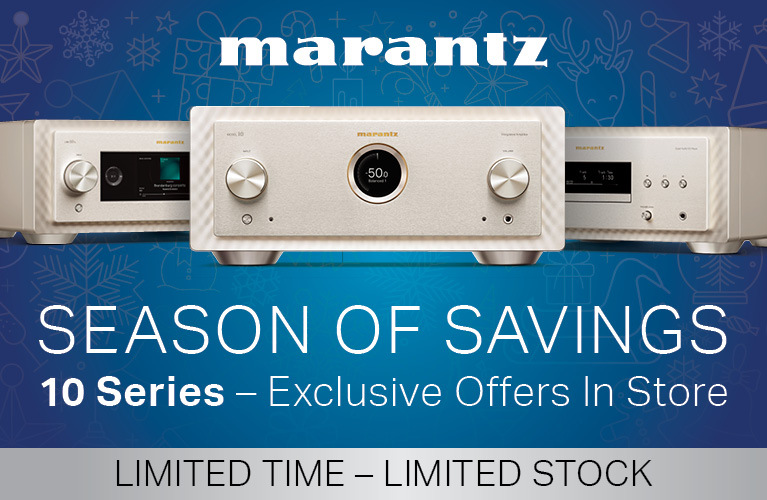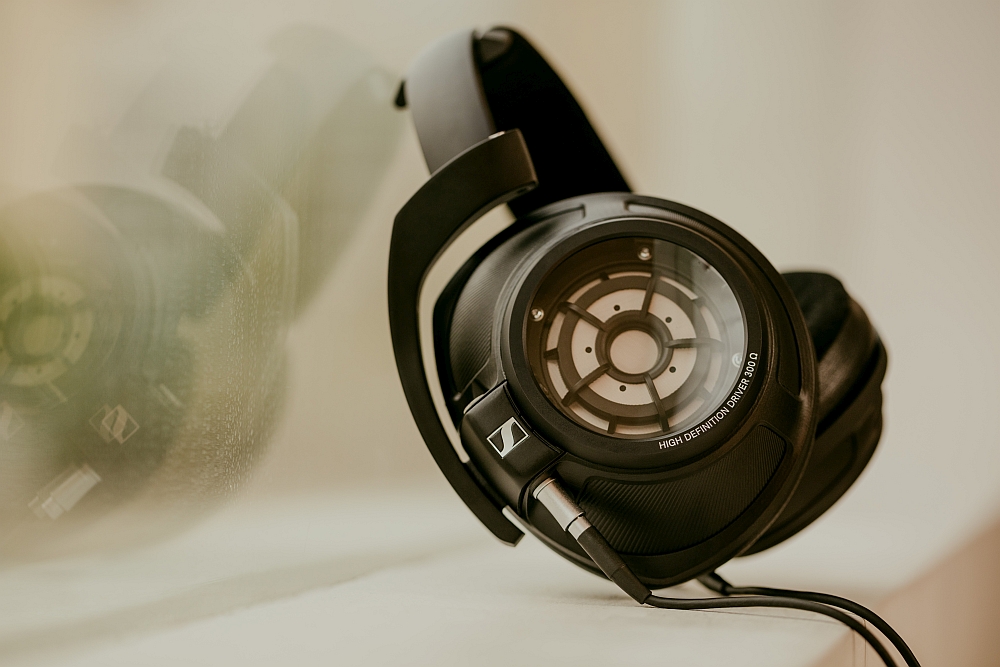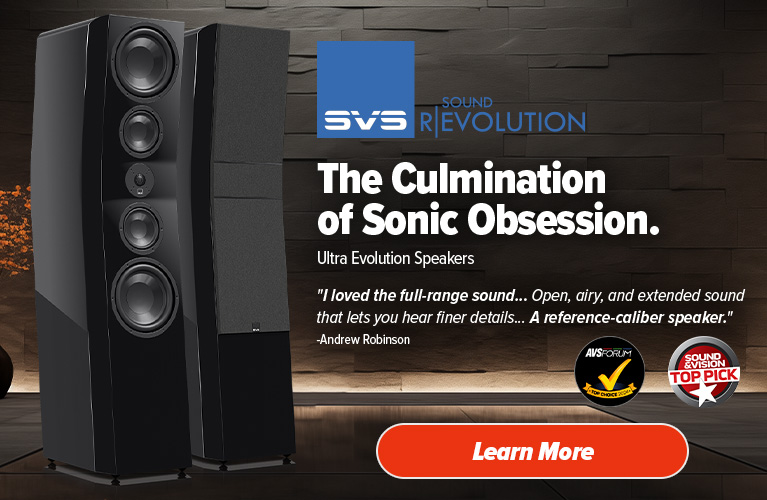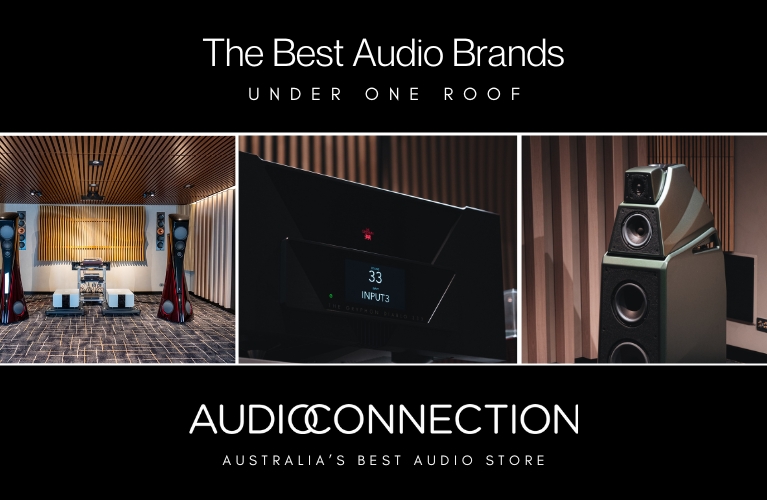Last year, when I wrote about the Sennheiser HDV 820 DAC and headphone amplifier (review here), the headfi world was frothing at the prospect of a new 8xx series headphone. But rather than replace the HD 800 and HD 800 S, both superior open back designs, Sennheiser unexpectedly delivered a closed back alternative in the rarefied High End series, the HD 820.
Isolation
In 1978, Thin Lizzy played a free concert to about 100,000 people on the steps of the Sydney Opera House. We were there, 14 year old punk rockers. Last month, SoundStage! Australia’s Editor-in-Chief Edgar Kramer posted a photo of the cover of Live and Dangerous on the SoundStage! Australia Instagram site and I was transported. Back to that event, certainly. But also back to my teenage self and to that peculiar sense of interiority, of exploring myself and the world through music. Back then, I played that album countless times. I still do, and let me tell you, as teen-me had already discovered, in the face of a howling family and an uncertain future, the medium with the most direct, unmediated connection to the music was and remains the headphone.
However, widely speaking, there are very few reference level closed back designs and for, umm… sound reasons. While closed back designs are great for sound isolation and bass response, they tend to fall short of their open back cousins in terms of ultimate sound quality, transparency and natural “wide open” staging. Both design approaches then have their uses – ever want to escape from howling children? You’re never alone with an open back design.
I have enjoyed many ‘unknown pleasures’ with closed backs like the Fostex TH900 Mk 2, the now discontinued Audeze LCD-XC and, more recently, the Sony MDR-Z1R. These cans can, with the right programme, provide a level of musical satisfaction and sonic realism to rival the open back competition. The enduring problem for me is that with closed backs the music, no matter what the programme, tends to remain trapped in my head, contained and constrained no matter how blissful the musical experience.
I can’t escape that when listening to a headphone with a closed back design. (I can rarely escape that fact with most domestic loudspeakers either). Really want to dance, dance, dance to Joy Division’s radio? To discover the out of my head, world-stood-still thrill of being at one with Thin Lizzy’s take on ‘everybody’s favourite little record girl’, “Rosalie”? Try an Abyss AB-1266 or the Sennheiser HD 800 S.
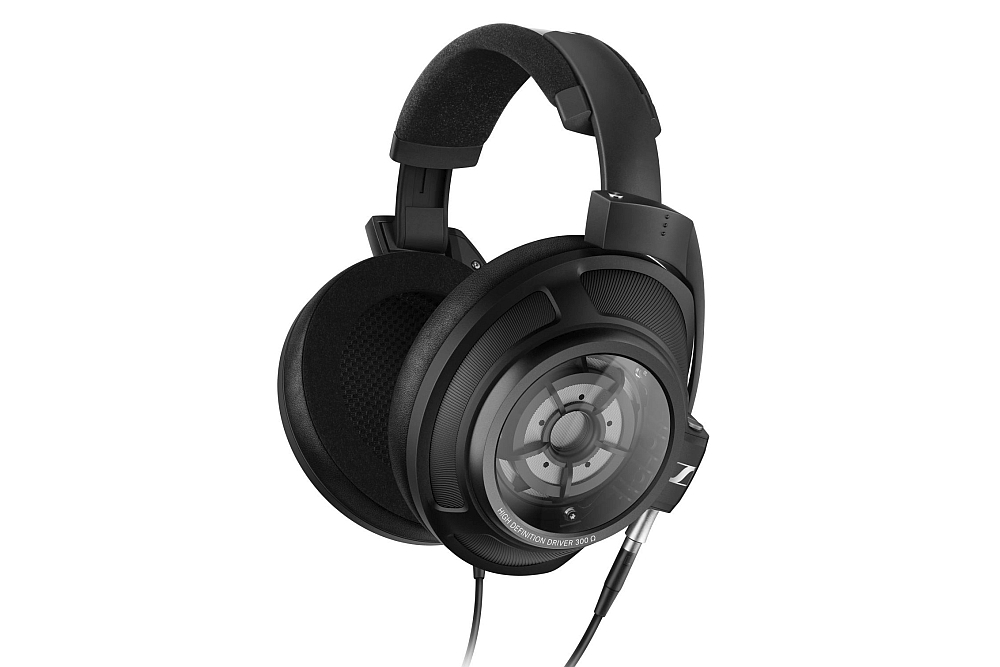
Sennheiser claims, however, that the HD 820 headphones are “simply the most transparent sounding closed headphones in the world, extending the boundaries of what has been achieved in sound reproduction with closed type headphones up until now”. The company has a remarkable 70-year track record in audio engineering and R & D, so I keep an open mind.
Glass
The Sennheiser HD 820 is a sealed, dynamic, circumaural stereo headphone that appears to be based on the established HD 8xx series design platform and its sizable 56mm diaphragm. I say “appears to be” because Sennheiser has yet to confirm that the actual diaphragm used in the HD 820 is precisely the same as that ingenious dynamic ring driver originally developed for the HD 800.
Rather than the usual cone type driver, Sennheiser uses a unique ring radiator diaphragm that, according to Sennheiser, produces a more coherent planar-like wavefront designed to interact with the ear more naturally and with less distortion due to reduced cone break-up. The diaphragm in the HD 820 has the same toroidal shape and accordingly, the HD 820 has the same D-shaped ear piece. It has a similar high impedance of 300 ohms and claimed frequency response of 12 Hz to 43,800 Hz (-3dB) or 6 Hz to 48 kHz (-10 dB). Sound pressure level is rated at a similar 103 dB, at 1 kHz, 1V.
The most telling technological difference, of course, is signified by the unique, visually striking, Gorilla glass covers. They’re actually a concave inward facing acoustic lens which seal the HD 820 drivers from the outside world. All closed back headphone designs must, by definition, address sound waves exiting from the rear of the driver and reflecting back from the driver sealed enclosure, causing sound energy resonances, which distort the primary wavefront in front of the driver. Traditionally, this is addressed by means of damping techniques such as filling the space with absorbent foam leading to the characteristically thicker bodied and closed in sound of the breed.
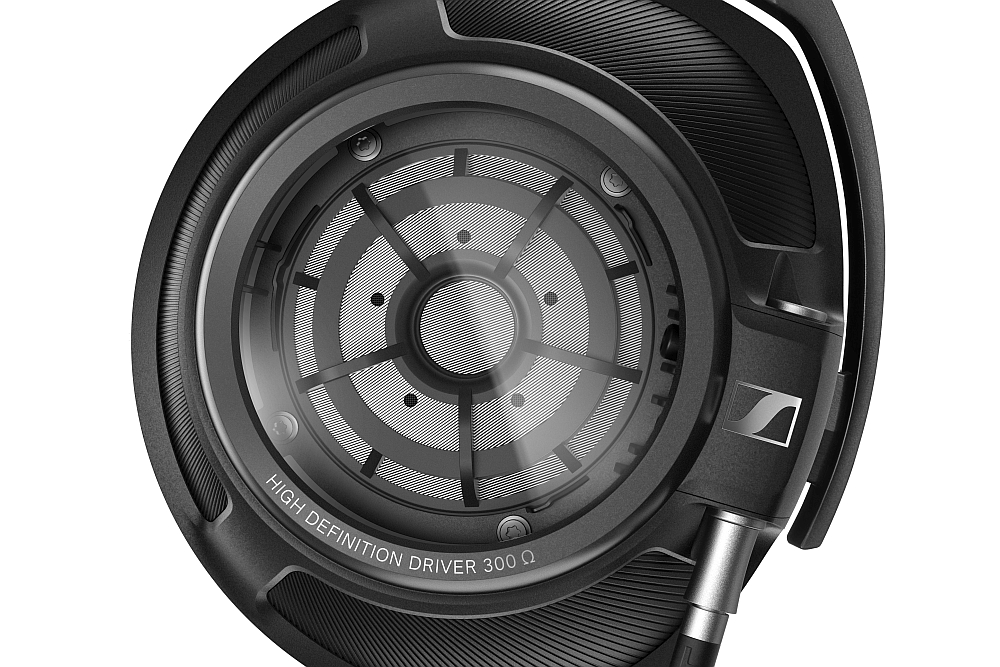
Instead, says Sennheiser’s Alex Grell, in the HD 820, the “patent-pending curved Gorilla glass serves to reflect the sound waves from the rear of the transducer to two absorber chambers, which results in minimal resonance”. By redirecting the outward travelling sound waves to these chambers located on the circumference of the enclosure behind the driver, the “sound waves are effectively ‘gone’ like they would be in open headphones” but without the leakage – or flood – as is the case with the HD 800. Very expertly and innovatively done, indeed!
Incubation
Weighing in at 360 g without a cable attached, the HD 820 is relatively light, albeit it is predictably about 30 g heavier than the HD 800. In use, I found them supremely comfortable even for long periods, more comfortable, in fact, than the HD 800, and with ample clearance for and from my ears. The HD 820 features a metal headband with an inner damping element (and stamped serial number) which again, feels very well balanced.
Appropriate to the closed back design, the HD 820 gets a new, plusher set of ear pads with synthetic leather on the outside and micro fibre on the inside for the best acoustic seal. While others have experienced difficulties achieving a proper seal to the detriment of bass response, I seemed to get on OK, although I wouldn’t say the HD 820 is the most ‘anechoic’ of closed backs in my experience. But, I didn’t buzz or howl under the influence of heat build-up in the HD 820 either.
As befitting a rather expensive flagship model, the HD 820 ships from Wedemark, Germany in a cardboard lined, solid wood black box with foam rubber insets internally to protect and store its precious cargo. It also ships with three low capacitance, silver plated OFC cables with gold plated plugs. Each cable is 3 m long, to accommodate ¼ inch TRS stereo unbalanced connection and two balanced connection formats – a standard 4-pin XLR and a 4.4mm Pentaconn connector. The Pentaconn type is also found on the Sennheiser HDV 820 headphone amp/DAC as well as an increasing number of other Sennheiser products adopting the JEITA protocol.
Oh, and also in the package, thankfully, is a black micro fibre polishing cloth provided for essential use on that classy Gorilla glass…
Love Will Tear Us Apart
In listening, the HD 820 was instantly recognisable as a Sennheiser 8xx series headphone. It shares much of the ultra-refined, über-revealing, and yes, wide open house sound of its open back predecessors which, when you think about it, is a remarkable technological achievement for a closed back design. It’s where it differs that I can see the HD 820 polarising opinion.
The HD 800, and ameliorated to a certain degree in the HD 800 S, is a hyper analytical and rather upfront sounding headphone. It is distinguished by its squeaky clean, razor sharp, transient response. It excels in the areas of detail retrieval, out-of-head staging and image localisation. It’s without peer when critical analysis and insight is called for.
On the other hand, the HD 800 is relatively light in the bass, has a distinctive 6 kHz bump or peak and has the kind of sharp, rising treble which may illuminate well recorded orchestral and symphonic work but renders stirring programme like Joy Division’s “Love Will Tear Us Apart”, really quite unlistenable, losing the humanity of the track in the process.
It is here that the HD 820 exploits its closed back design – and its design trade-offs – to good, arguably more populist, sonic effect. Warmer in overall tonal balance and with more flesh on the bone of phantom images, you might say the HD 820 trades the sheer detail and ultimate soundstage depth and width of the HD 800 for a more inviting, less detached sonic perspective.
The HD 820 adopts a soft “W” shape in overall frequency response and is strictly-speaking, somewhat less neutral across the frequency band. The bass has a subtle elevation (but without the mid bass bump of many of Sennheiser’s competitors). The midrange also gets a mild boost which adds body and balance to the sound. It avoids the dreaded 6 kHz spike but instead has a dip around 300 Hz which Alex Grell maintains was mandated by the design to accommodate for resonant frequencies inside the enclosure.
The treble? While more rounded and less extended than the HD 800, the HD 820 retains that distinctive signature Sennheiser treble, that added treble energy, which here contributes, no doubt, to the HD 820 sounding significantly more open and airy in character than any other closed back in my experience.
Transmission
Through the player goes “Private Life” by the inimitable Grace Jones. This exemplary recording features the legendary Jamaican engine room of Sly and Robbie. On the title track, the HD 820 will never be mistaken for a bass-head monster like the Fostex TH 900 Mk2 or the Sony MDR-Z1R. Nonetheless, the HD 820 reproduces immensely satisfyingly deep and powerful bass to provide the necessary authority and ‘solid foundation’ for reggae. Though comparatively lean, the bass is surprisingly linear and uncoloured for a closed back design. It is tight, extended, and clear. It has dazzling texture, nuance and pitch definition.
Also remarkable for a closed back, the bass has little to no bleed into the critical midrange. Jones’s voice is allowed to convey the “private life drama” with pure, unfettered, venomous emotion. Without undue intrusion from the bass registers. Delving deeper into the Jones album of the same name, bass lines consistently have quite visceral impact and are tracked with superior agility, transient snap, and micro dynamic shading. Bassist Robbie Shakespeare deserves no less.
The HD 820 overcomes the slowing and muddiness of other closed backs. It is more than capable of generating noteworthy transient and dynamic snap in the low bass, however, the Sennheiser HD 820 would still not be my first choice if I lived solely on a steady diet of rock and electronica. It is just too polite and controlled to really rumble, if you know what I mean. Forward momentum proceeds with insufficient urgency – and insurgency, compared to say the JPS Labs Abyss AB-1266.
Atmosphere
On goes Grant Green’s classic Idle Moments and that 300 Hz dip was less noticeable on this more natural, acoustic-based instrumental recording than the presence region bump would have on the HD 800. I was immersed in a warm, relaxed midrange that was spacious, open and dynamic. Instruments had correct timbre.
The treble was surprisingly sweet and intimate but also extended and expansive. Top to bottom dynamic scale was awe-inspiring. I did not feel closed in. Rather than the dry-ish, ruthlessly revealing presentation I expected, the HD 820 had a natural liquidity and ease that I could simply never have previously imagined from an 8xx series Sennheiser.
Tonal balance and contrast between the various instruments were weighty enough. Textural differences were convincing. Instruments had wonderful colour, clarity, and image density. The HD 820 was arguably fuller than the HD 800. Images also had appropriate size and air if not quite to the level of the HD 800 S. But, finally, here was a Sennheiser with as much body and soul as speed and detail.
The HD 820 never lost its coherence and composure no matter how complex the musical interplay. The multiple instrument lead line harmonies on “Nomad” somehow always reminds me of the twin guitar attack on Thin Lizzy’s “Southbound”... and when Green takes a major scale pentatonic solo on “Jean de Fleur”, well… Suffice it say, the HD 820 conveyed the touch and feel of his soulful playing with focus and precision. The HD 820 plays it with a rare passion of a kind that I have never experienced from a Sennheiser before.
In another Sennheiser signature move, layering went wide and deep. Staging begins well outside, in front of and beyond my aging forehead. The HD 820 was indeed, truly open sounding for a closed back headphone, including the Focal Utopia. It was in fact, way more out-of-my-head open than many open backs. Duke Pearson’s piano on the HD 820 was notably wide and evenly balanced left hand to right. The piano’s action had the requisite scale and drama as was the large instrument’s precise localisation in space and time. Actually, it’s currently somewhere in front of and outside my left ear.
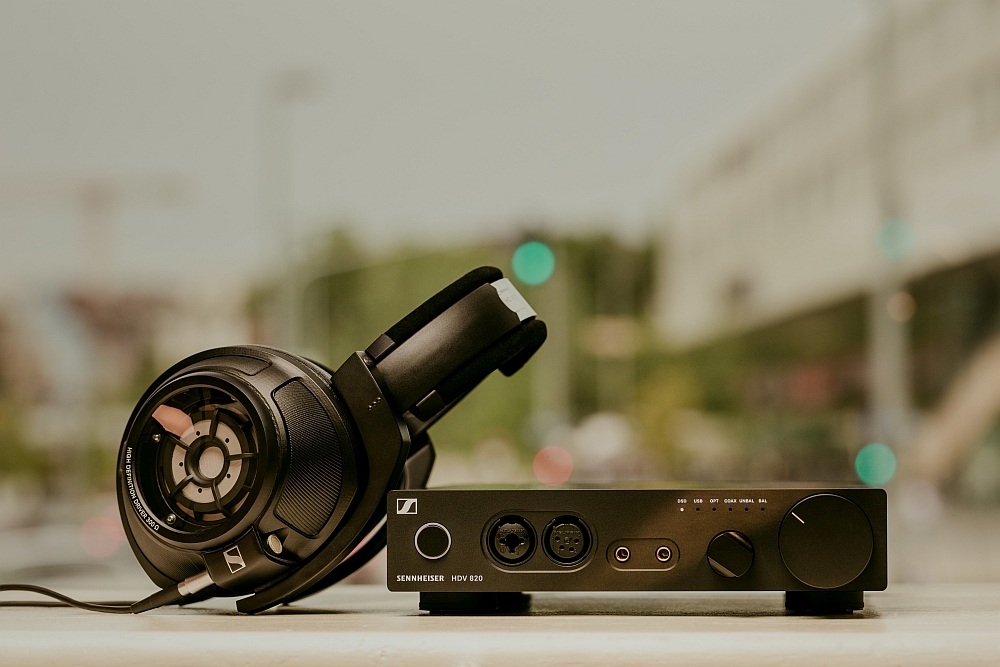
Ambient tails decay spectacularly through the HD 820 if again not quite to the black infinity of the Sennheiser 8xx open backs. What matters to me more is how the HD 820’s resolving prowess brings out the power of the musical interplay and understandings between the musicians. The felt atmospheric charge of Billy Hutcherson’s masterfully percussive vibes, the sparked tension and release energy of Green’s fingers on amplified strings, an odd, accented cymbal cue from Billy Higgins – all the little signals and musical information, all those miniscule, delicate touches that make for live music going down in a real acoustic space – come together as one cohesive and compelling musical event through the HD 820.
The level of musical as distinct from mere analytical detail being transduced by the HD 820 is absolutely scintillating. And, yes, Live and Dangerous sounds awesome through this headphone!
Sure, the HD 800 S gives you more – an even more humungous soundstage, and even more open space and air if that’s how you measure your music. It offers more detail, more transparency to the source and more overt analysis about the recording. It will allow you to compare the recording budgets of Joy Division and Grace Jones, quite explicitly. But I find the HD 820 more ‘comfortable’ and enjoyable to listen to, more spirited and human.
I simply find it easier to connect to the nub, the spiritual wellspring of music of all kinds though the technically less perfect HD 820. To cop my final appropriation of a Joy Division title, this closed back headphone has substance.
Conclusion
The HD 820 does push the boundaries of the im/possible for a closed-back headphone, and as claimed, Sennheiser has succeeded in making the HD 820 the most open, natural and transparent sounding closed back headphone to date. Listeners who prefer or find themselves in environments that mandate the use of sealed back high-end headphones for that reason alone are in for a massive treat.
While sharing much of the house sound, the HD 820 is not simply a closed back version of an 8xx series headphone. In terms of pure technical performance, the HD 800 S will give you more of the Sennheiser house sound for less outlay. But once heard, you might just realise that the HD 820 is a more than viable alternative to the HD 800 and HD 800 S on its own very substantial merits.
The HD 820’s warm tonality and slightly more forgiving nature opens it up to a different kind of listener and broader programme material. That alone makes the HD 820 a technological tour-de-force worthy of space on your noggin.
... Peter Katsoolis
Associated Equipment
- Head speakers – JPS Labs Abyss AB-1266
- Headphone Amplifier – Pass Labs HPA-1; Sennheiser HDV 820
- Sources – Aqua Acoustic Quality La Diva CD Transport & Formula xHD DAC; Auralic Aries Streamer
- Cables – Sablon Audio RJ45 Ethernet; Shun Mook RCA; Acoustic Revive XLR-1.0PA II; Skogrand Wagner AC; Luna Orange PC
Sennheiser HD 820 High-End Headphones
Price: AU$3499 (HDV 820 amp used in review AU$3799)
Warranty: Two Years
Australian Distributor: Sennheiser Australia
+61 2 9910-6700
www.sennheiser.com.au
Sennheiser electronic GmbH
Am Labor 1
30900 Wedemark
Germany
+49 (0) 5130 600 0
www.sennheiser.com

